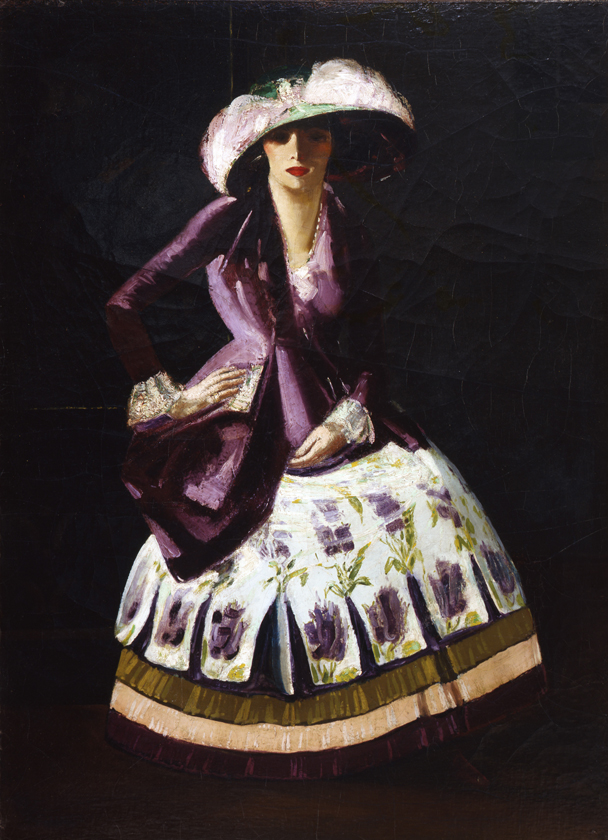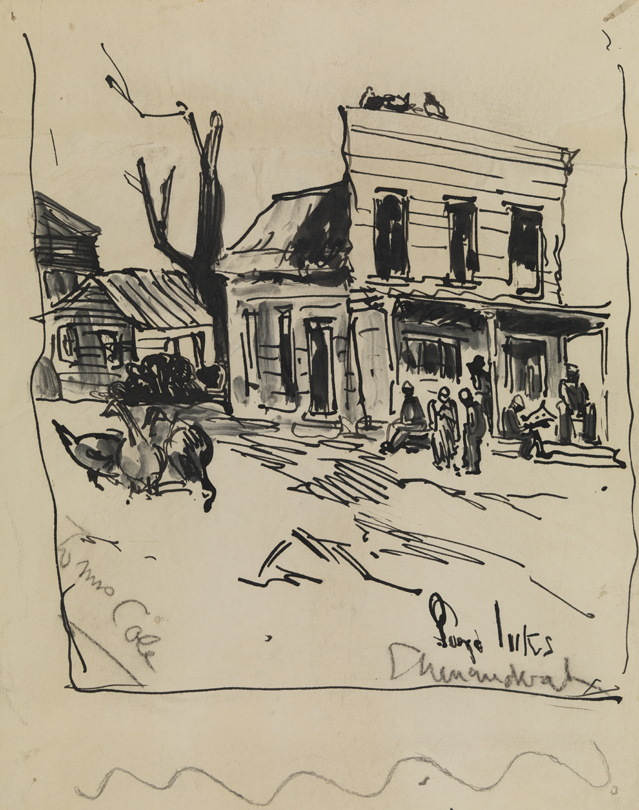
Polish Dancer
George Benjamin Luks
Like his artist comrades in the group influenced by Robert Henri, Luks rejected traditional academic painting in favor of stark realism and modern subject matter. Of the group dubbed the Ashcan School, Luks stayed closest to Henri’s model of capturing quickly the vitality of the urban environment in all its grit and gleam. A boisterous, earthy personality and something of a blowhard, Luks briefly studied at the Academy in 1884. After early careers as a newspaper illustrator and comic artist, he became an established painter who participated in both the landmark 1908 exhibition by the The Eight and the equally historic Armory Show of 1913.
Luks is widely regarded as the most insightful portraitist among The Eight. He grew up in small Pennsylvania towns where industry attracted immigrants, and his paintings reveal sympathy for marginalized people. Luks is particularly known for his portraits of New York street characters, affectionate renderings of distinct personalities and appearances. "Polish Dancer" seems to be an extension of this affinity, with possible antecedents in the series of paintings Luks made in 1918 after meeting a group of Czech emigres while visiting his friend Gutzon Borglum, the sculptor of Mount Rushmore. In 1927, "Polish Dancer" was awarded a gold medal by the Locust Club, a men's social organization in Philadelphia.
Artist
Date of Birth
(1867-1933)
Date
ca. 1927
Medium
Oil on canvas, mounted on masonite
Dimensions
66 5/16 x 48 in. (168.4 x 121.9 cm.)
Accession #
1955.1.2
Credit Line
Gift of the Locust Club, Philadelphia
Copyright
No known copyright restrictions
Category
Subject
More by George Benjamin Luks
We're so excited you're planning to visit PAFA!
Make time for art — visit us Thursday to Sunday.
Before reserving your tickets, please review helpful information about museum hours, accessibility, building access, and special admission programs.
If you have any questions, feel free to reach out to us at visitorservices@pafa.org — we’d love to help!

![[Wooded landscape with pond]](/sites/default/files/artworkpics/1980_23_l.jpg)